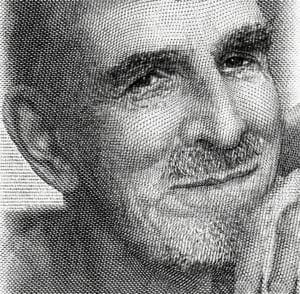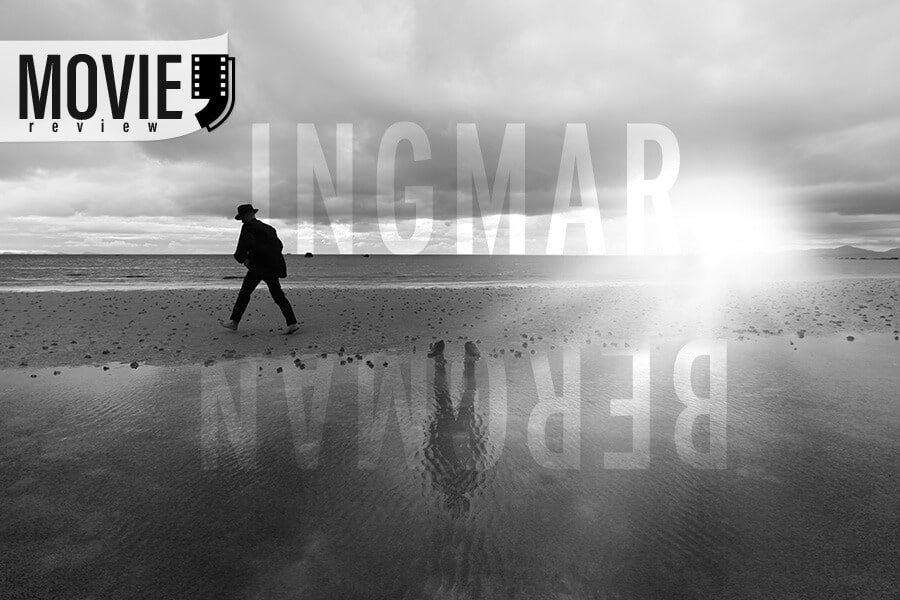In this article, we will look at the vast cinematographic journey of Ingmar Bergman. When the genius leaves the world of art, everything that remains after goes into eternity. Just like the author who created all that masterpieces. And if anyone willing to be talked about, he would direct something completely different, which could be beyond the frames of society's understanding. And how ironic it is, those all-embracing stories about the imperfection of life, its emptiness, depravity exists important after centuries. Even though generations change, the value of talking about the depth, as you can see, remains the same.
Ingmar Bergman is one of those who spoke. His words, his films, almost 64 stories, together presented him as one of the founders of auteur cinema. Today he is already known as a man seeking for God, protest and eternal existential crisis. We call him a talented genius, what impossible to reject. But before we agree, firstly need to learn how to understand his creation. Ingmar Bergman is also considered a unique director who has filmed about life. About its colourful and dark sides. A little more has been filmed about the gloom of life. Therefore, more often he is still classified as one who successfully describes the breakdown of personality. Ingmar Bergman has created a variety of female characters. Moreover, if the image of a mysterious man, usually played by Max von Sydow, still dominated in the early films, then, starting with the classic films of the 1960s, a woman was in the centre of the plot and composition. A woman against society, crushed by social boundaries, responsibilities, a woman in depraved sexual scenes, and more often a woman in search of God. He opened not only the Scandinavian cinematography actresses but also the world talented ones: Ingrid Thulin and Liv Ullman, Bibi Andersson and Harriet Andersson, Gunnel Lindblum and Eva Dahlbeck, as well as Ingrid Bergman, the main character of the film `Casablanca`,

Ingmar became the first director who touched upon the topics of rape, the emancipation, conventions of family life, religion in the suppression of women. In the 1960s, Ingmar devoted enormous time to religious part – a trilogy, one of the most famous works: `Through a Glass Darkly`, `Winter Light` and ` The Silence`.
The trilogy that changed the concept of semantic cinema. Ingmar Bergman denied the connection between the paintings. Stories have to be perceived as independent, separate units. But the theme of faith, religion, a philosophy so connected the plots that from three independent stories came one single parable of the doubts of the universe. The plots are not alike, characters, circumstances, the existence of God and the power of faith change.
Through a Glass Darkly
For the first film, Ingmar Bergman borrowed the title from the Bible, from the thirteenth chapter of the epistle of the Apostle Paul, whereas acolyte prepares new Christians to meet God, as the moment of truth and insight. Bergman was a religious director. `Through a Glass Darkly` is a complex drama about family relationships, mental disorders and religion, as a possible perspective to accept voices, that appeared in the head of a beloved one.
The family was on holiday in the Farrer Islands. By the way, if we count the frequency of the appearance of the Farrers’ landscapes, we can understand that this was Bergman’s favourite filming location. But back to the plot. Family: father – writer David (Gunnar Björnstrand), daughter Karin (Harriet Andersson), Karin’s husband – doctor Martin (Max von Sydow) and Karin’s younger brother – Minus (Lars Passgård). The woman is suffering from a mental disorder. Voices appear in her head and command to obey. After the wife’s suicide, who also suffered from schizophrenia, David departed to Switzerland to write a book. His life turns into simple pictures and events consequences, as a material for books. Pretending as if feelings and emotions did not exist. The plot shows not only the one woman and three men in different relationships. Karin is the centre of the universe for her husband. And at the same time, he didn’t admire Karin’s personality as its own, but his presence in her life. He is in love with his superego, heroic man of her sick universe.
While the episodes, rolling up the fishing facilities, David and Martin discuss Karin’s illness. She is terminally ill, with minimal chance of rehabilitation. There is tension in the words of the characters. Ingmar Bergman opens the door to the conflicted world within each of them. A well-known writer who is working on his novel and cannot get ahead in it. Outwardly, his relationship with his son, daughter, the husband is going well. He gives them gifts brought from Switzerland at the dinner, then the children play in front of a composition, reminiscent strongly of Shakespeare. But since David is alone he cries crushingly, realizing the worthlessness of the gifts. He also understands something important about his mentally ill daughter Karin: her illness is incurable.
What David writes about this in the diary, what Karin looks, while she was examining secretly father’s parlour. But worse is that the father perceives her illness as material for a future job. He suffers from the inability to truly love someone. Instead of love, he discovers only a rational principle – one that allows the writer to select the right words, put phrases out, and formulate a sounding text of future work. David’s wife committed suicide. In Switzerland, David also tried to commit suicide by driving over a cliff. But an unknown force stopped the wheels of the car at the very edge. Perhaps, it was the Divine and the faith he had lost. Thoughts that an unknown force tells him to live and rethink what he has ceased to value.
Karin’s mental illness was influenced by what she has read. She begins to hear voices and takes them for a divine voice. This almighty God, whose coming is perceived as good and joy, becomes the subject of her reflections. It says that it exists simultaneously in two worlds: in the real and eternal world. Being in a state of painful spiritual duality, women are sure that God will visit her. She even sees that many people have already gathered in the room. They are all waiting for the door to open and God will appear. Seventeen-year-old Minus is also going through his drama of father misunderstanding and constant loneliness. His life divided into two halves: before and after incest with Karin. An explicit scene with incest is not shown, only by semantically narration. However, connection with Karin intensifies his despair to the limit. Once Karin confesses to her father, she blames the voices that ordered her to do that. At this moment, the father realizes how much he loves his children. David himself turns into God: he invites Minus to talk about what happened. But Minus has hidden, of being afraid, like Adam tasted an apple. The father does not reject the incest, but rather tries to talk to him. At the end of the conversation, Minus experiences an inner satisfaction. Father finally spoke frankly with him for the first time.
The film is dedicated to the search for the truth about God. What is God? Beauty, people, human actions? Or maybe, on the contrary, God is also in the most perverted fantasies and ideas. Bergman devotes a lot of time to find the truth. And it leaves even more space to make the answers to rhetorical questions. But in his films, Bergman didn’t praise the Creator but questioned his manifestations. The story behind The Faith Trilogy connected with director life. He was born in the family of a Protestant pastor and nurse in the Swedish city of Uppsala. God, as an integral part of the children’s world outlook, was in both joy and sorrow. The father approached the interpretation of the great Creator conservatively – physical punishment was equal to moral liberation. We can assume that in adulthood, the topic of religion was not a uniqueness choice for filmmakers who liked to produce philosophy. God was also an open question, that has haunted Bergman since childhood.
Winter Light
In the film Winter Light, we can trace the revelation of Ingmar Bergman as a person going through an existential crisis. I mean, the first part of the trilogy allude of the presence of the God as well as in a woman’s life and David complete denying. In Winter Light Ingmar Bergman directly raises the question – God is doubtful.
This is the problem the hero Tomas Ericsson (Gunnar Björnstrand) is experiencing. A priest in a Catholic Church in Sweden. He lost his wife. After the tragedy, thoughts about an invisible power that has no basis for blind faith began to appear. Either it is there, or not – impossible to prove. A local teacher Märta Lundberg (Ingrid Thulin) is blindly in love with him, as with God. She devoted to this man, even though it destroyed her. Here Bergman deliberately put the priest on the way of heartless tries. He is forced to inform the pregnant parishioner about her husband’s suicide. He refuses to love the best and the worst in people without reason. Openly speaks vile facts to the woman who loves him. He does not dare to start Mass – he is going to leave the service in Church, neglecting the canons. Other words, Thomas lost the faith and the question of how to find it back is still open.
Silence
In the plot of the Silence, Bergman generally makes God silent. That’s why the name is. God is silent, he’s observing us. Two women, sisters Ester (Ingrid Thulin) and Anna (Gunnel Lindblom) and a boy with them – the son of one, all together they’re going home by train. Ester suffers from lung cancer, her life is torment. For Anna, life is all about excitement and random, short lasted relationships with men. The boy was at the stage of his maturity, needs the attention of his mother but remains exposed outside the compartment door. This is how the director separates the child from the adults. He discovered the loneliness of each of the characters. Like the boy feels redundant and invisible. He wanders the hotel gaps, having fun with the local staff.
The title of the film Silence fully reflects its plot. Few phrases and remarks. The characters practically do not communicate until the final explosion of emotions and anger with accusations. Here Bergman shows death not detached, not abstract, but real. He no longer takes the excruciating suffering out of the frame, puts it in the centre, not allowing other episodes to retouch the main thing: to die is both hard and painful. The ending of the film becomes symbolic. When Anna, after the death of her sister, refreshes her face with rain. This is how the hassle, which usually appears near the bed of a seriously ill patient, subsides – when it is imperative to walk on tiptoe and talk in a whisper. It may seem that one sister is leaving the other to die alone; but if you perceive their story sensually, then Esther has already died. Anna, who took care of her, for the first time in a long time, allows herself to breathe deeply and start living for anew. While her sister lives out her days, Anna learns to love. We can condemn her but condemn in silence. As it should be according to the film.

Ingmar Bergman’s cinema achievements inspired the creation of the Swedish Film Institute and the emergence of a local film award The Guldbagge Awards, which was called in English the Gold Scarab. At the first awards ceremony, Silence won three out of four existed: Best Film, Best Director and Best Actress. Ingmar Bergman has become forever an inspiration for young directors who continue to draw ideas in the eternal search for values.
Photos: Shutterstock / Photomontage: Martina Advaney
More movie reviews here:
Support us!
All your donations will be used to pay the magazine’s journalists and to support the ongoing costs of maintaining the site.
Share this post
Interested in co-operating with us?
We are open to co-operation from writers and businesses alike. You can reach us on our email at cooperations@youthtimemag.com/magazine@youthtimemag.com and we will get back to you as quick as we can.









